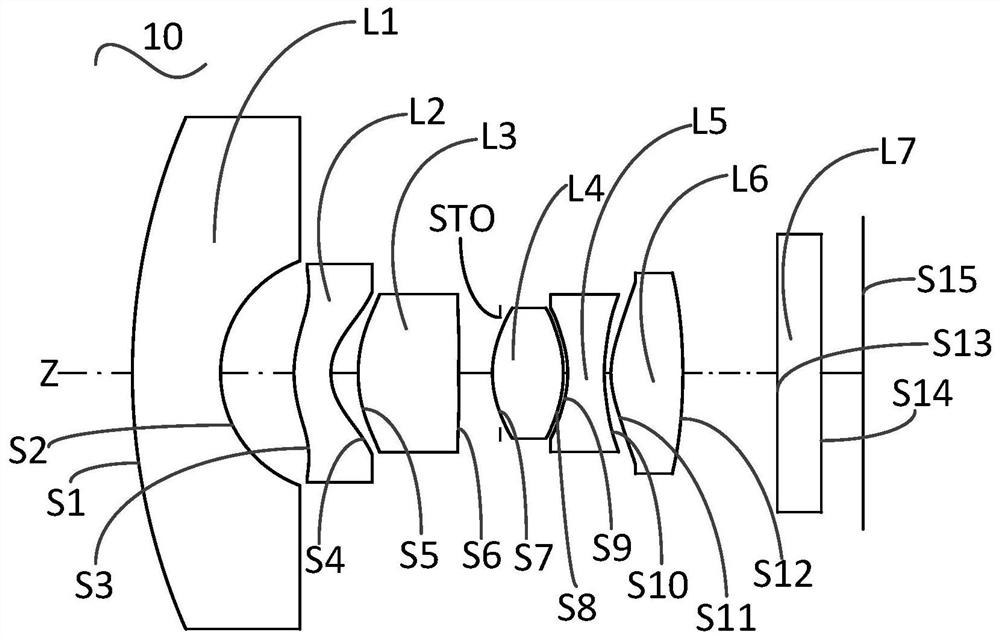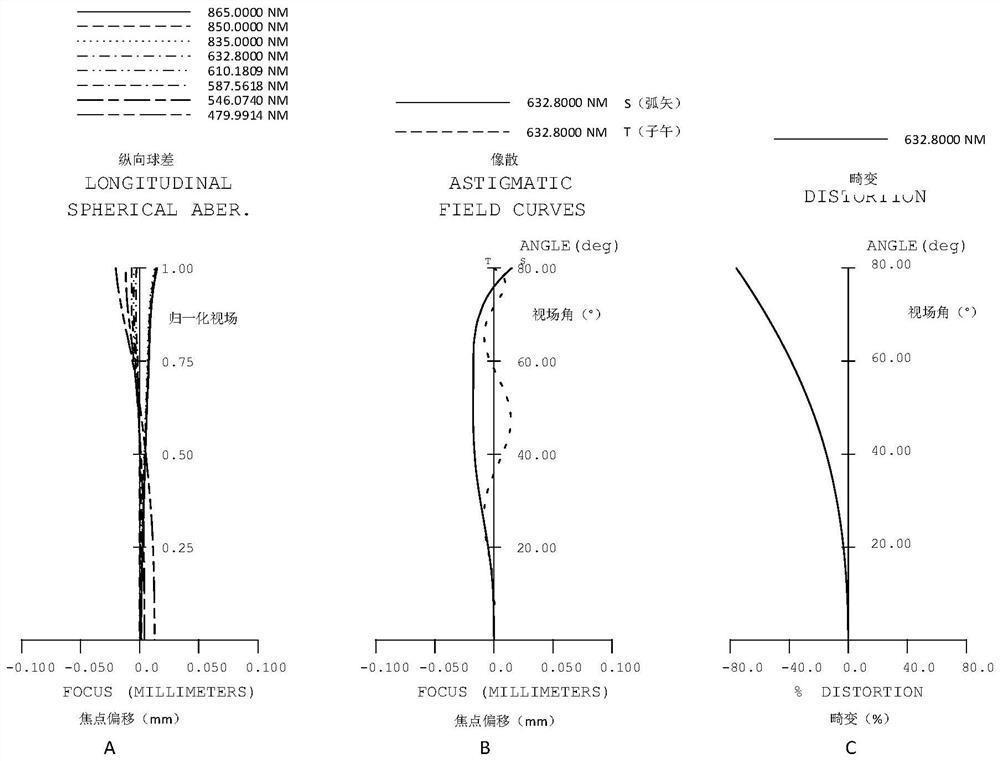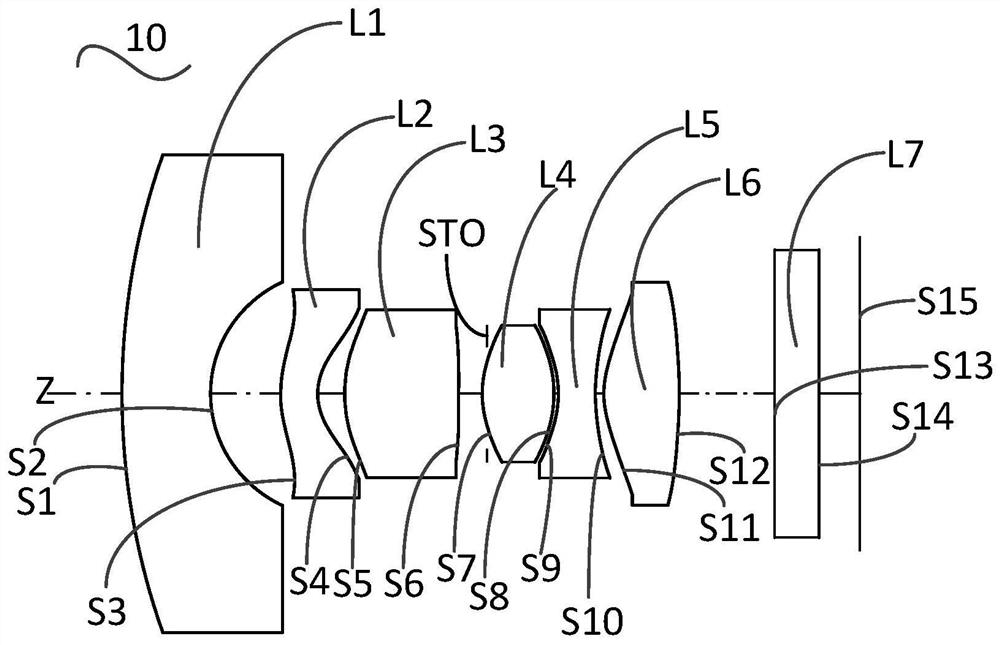Optical lens, camera module, electronic device and vehicle
A camera module and optical lens technology, applied in the field of camera modules, electronic devices, vehicles, and optical lenses, can solve problems such as increasing the risk of traffic accidents, reduce the risk of distortion, improve resolution, and improve photosensitive performance. Effect
- Summary
- Abstract
- Description
- Claims
- Application Information
AI Technical Summary
Problems solved by technology
Method used
Image
Examples
Embodiment 1
[0123] see figure 1 , in the first embodiment, the first lens L1 has a negative refractive power, the second lens L2 has a negative refractive power, the third lens L3 has a positive refractive power, the fourth lens L4 has a positive refractive power, and the fifth lens L5 has a negative refractive power Power, the sixth lens L6 has a positive refractive power.
[0124] The object side S1 is a convex surface near the optical axis Z, and the image side S2 is a concave surface near the optical axis Z. The object side S3 is a convex surface near the optical axis Z, and the image side S4 is a concave surface near the optical axis Z. The object side S5 is a convex surface near the optical axis Z, and the image side S6 is a concave surface near the optical axis Z. The object side S7 is a convex surface near the optical axis Z, and the image side S8 is a convex surface near the optical axis Z. The object side S9 is a concave surface near the optical axis Z, and the image side S10...
Embodiment 2
[0138] see image 3 , in the second embodiment, the first lens L1 has a negative refractive power, the second lens L2 has a negative refractive power, the third lens L3 has a positive refractive power, the fourth lens L4 has a positive refractive power, and the fifth lens L5 has a negative refractive power Power, the sixth lens L6 has a positive refractive power.
[0139] The object side S1 is a convex surface near the optical axis Z, and the image side S2 is a concave surface near the optical axis Z. The object side S3 is a convex surface near the optical axis Z, and the image side S4 is a concave surface near the optical axis Z. The object side S5 is a convex surface near the optical axis Z, and the image side S6 is a concave surface near the optical axis Z. The object side S7 is a convex surface near the optical axis Z, and the image side S8 is a convex surface near the optical axis Z. The object side S9 is a concave surface near the optical axis Z, and the image side S1...
Embodiment 3
[0153] see Figure 5 , in the third embodiment, the first lens L1 has a negative refractive power, the second lens L2 has a negative refractive power, the third lens L3 has a positive refractive power, the fourth lens L4 has a positive refractive power, and the fifth lens L5 has a negative refractive power Power, sixth lens L6 has positive refractive power.
[0154] The object side S1 is a convex surface near the optical axis Z, and the image side S2 is a concave surface near the optical axis Z. The object side S3 is a convex surface near the optical axis Z, and the image side S4 is a concave surface near the optical axis Z. The object side S5 is a convex surface near the optical axis Z, and the image side S6 is a concave surface near the optical axis Z. The object side S7 is a convex surface near the optical axis Z, and the image side S8 is a convex surface near the optical axis Z. The object side S9 is a concave surface near the optical axis Z, and the image side S10 is a...
PUM
 Login to View More
Login to View More Abstract
Description
Claims
Application Information
 Login to View More
Login to View More - R&D
- Intellectual Property
- Life Sciences
- Materials
- Tech Scout
- Unparalleled Data Quality
- Higher Quality Content
- 60% Fewer Hallucinations
Browse by: Latest US Patents, China's latest patents, Technical Efficacy Thesaurus, Application Domain, Technology Topic, Popular Technical Reports.
© 2025 PatSnap. All rights reserved.Legal|Privacy policy|Modern Slavery Act Transparency Statement|Sitemap|About US| Contact US: help@patsnap.com



